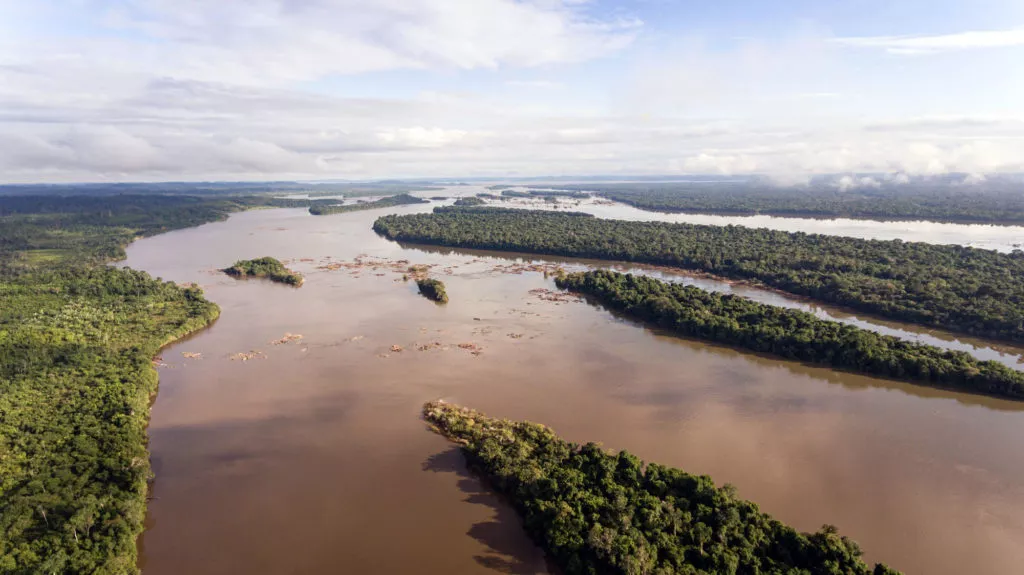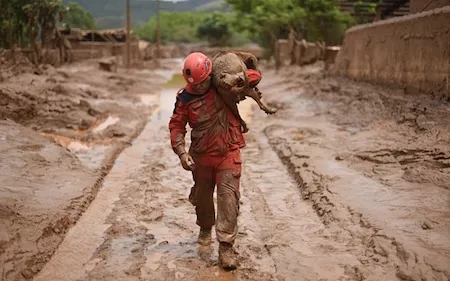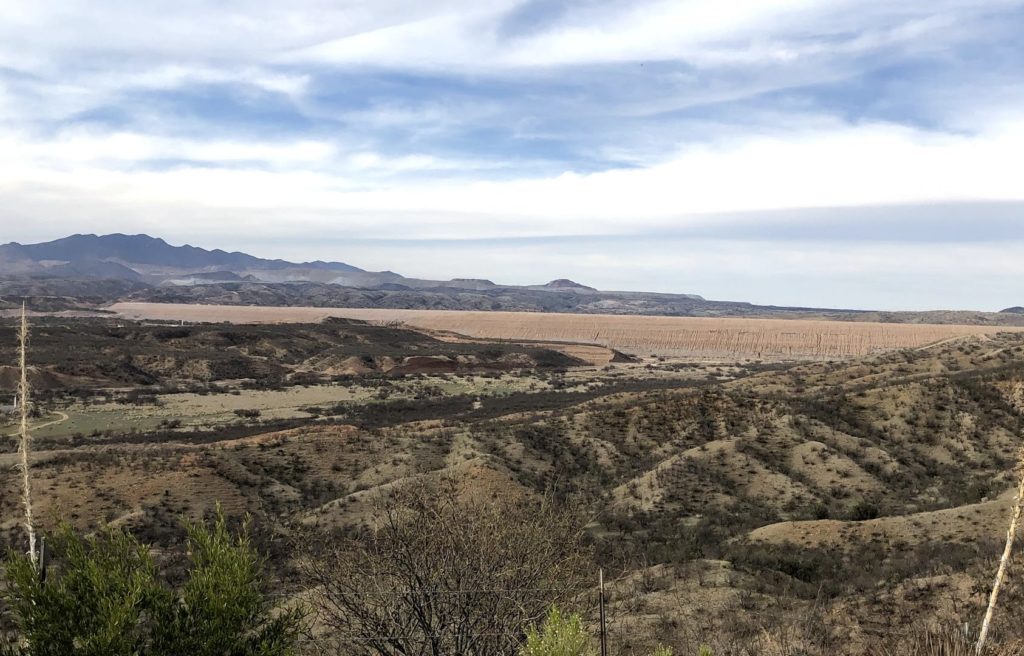Minas Gerais, an inland state in the Southeast of Brazil, has hundreds of tailings dams that local organizations call ticking time bombs. The state covers over 220,000 square miles and is home to more than 20 million people. It also has a long history of mining and its name means “General Mines” in English.
Minas Gerais has more tailings dams than any other state in Brazil. In 2020, the National Mining Agency in Brazil registered 221 tailings dams in Minas Gerais, 42 of which were classified as high risk. It has also been the site of the largest mining catastrophes.
The Samarco Disaster
On November 5th, 2015, the Fundão tailings dam at the Samarco mine burst in the town of Mariana, Minas Gerais. The mine was a joint venture between BHP Billiton and Vale, Brazil’s largest mining company.
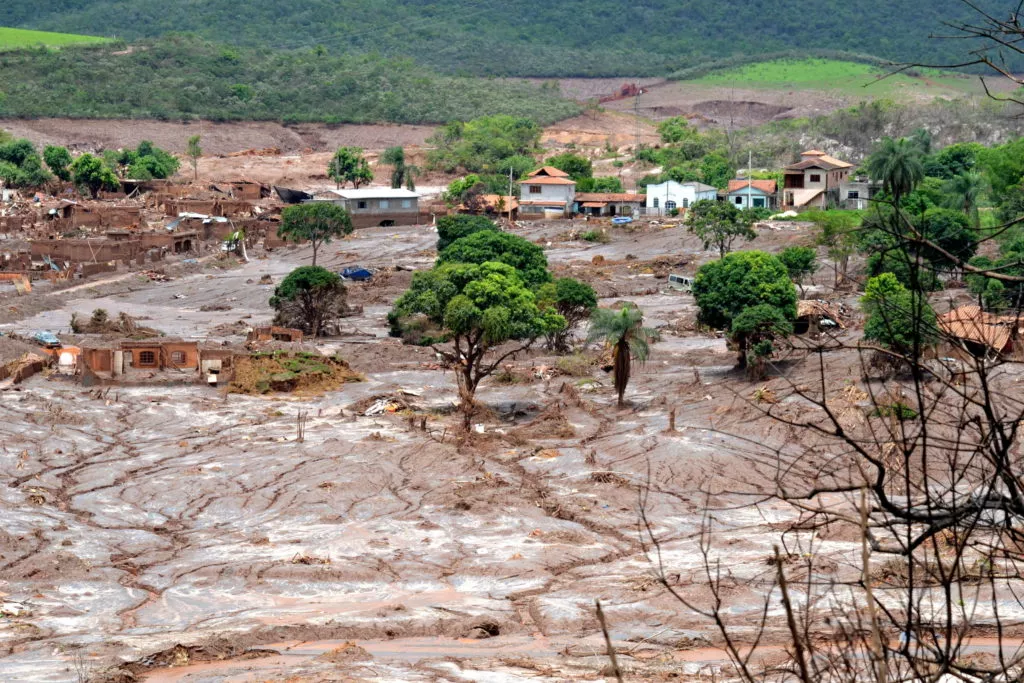
As the dam broke, 45 million cubic meters of iron ore waste and mud covered the nearby town of Bento Rodrigues and beyond. 19 people were killed and at least 600 lost their homes. At the time, Brazilian President Dilma Rousseff called it the “worst environmental disaster Brazil had ever seen.”
According to permitting paperwork submitted by the mining company, they estimated a potential dam break would flow about 3.5 kilometers. However, ultimately, the tailings traveled over 600 km. The majority of houses in Bento Rodrigues were destroyed by the flowing mud, and according to a report on the collapse, a mine worker “telephoned her family…to warn of the tide of mining waste. Otherwise there would have been no warning for the people of Bento Rodrigues, as there was no alarm or other early-warning system.”
After the Mariana disaster, Vale’s new CEO Fabio Schvartsman coined a company motto: “Mariana, Never Again!”
The Brumadinho Disaster
But on January 25, 2019 the Córrego do Feijão dam at a Vale mine near the town of Brumadinho collapsed releasing about 9.7 million cubic meters of waste. Another tidal wave of mud rushed downhill, this time covering parts of the town of Brumadinho and killing 270 people.
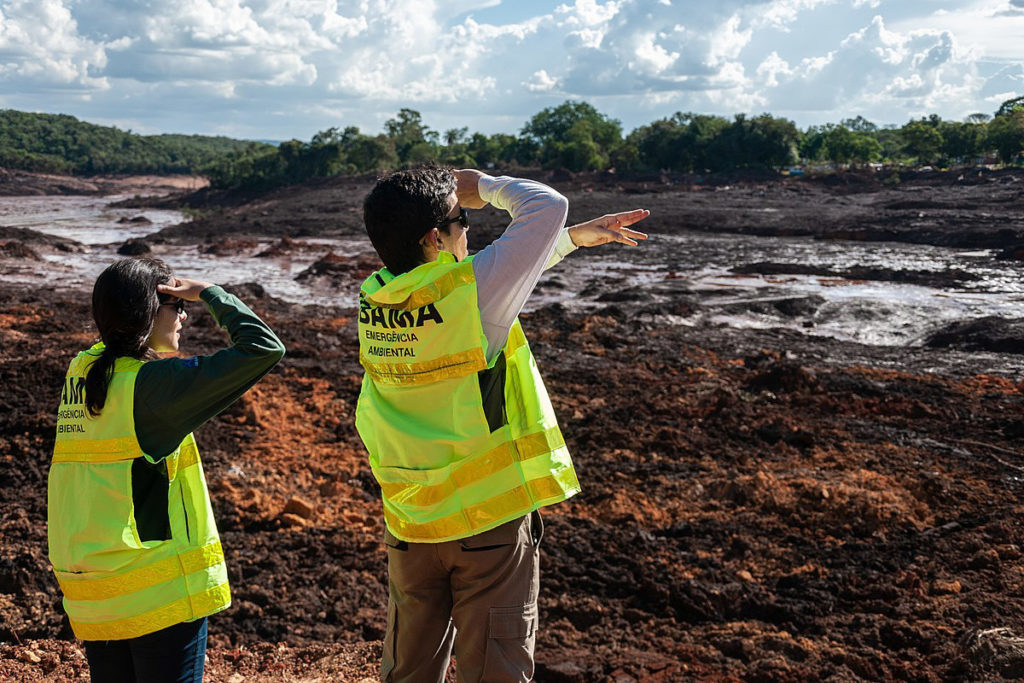
The destruction was astounding. Over a year later, firefighters continue to search for bodies in the mud. CEO Schvartsman and 15 other Vale employees and contractors have been charged with homicide. Brazilian prosecutors assert company employees knew about instability issues with the dam, systematically hid safety concerns and retaliated against employees or contractors that highlighted problems. An independent investigation in 2020 showed that Vale knew about the issues as far back as 2003.
The Continuing Cost of Disasters
In April of 2020, the National Mining Agency in Brazil ordered mining companies to stop depositing tailings into 37 dams in Minas Gerais for failing, or not presenting, dam stability certification. These orders came as the mining company, Vale, has already evacuated some residents from communities below at-risk dams. Many people across Minas Gerais deal with anxiety and fear in a daily basis brought on by the tailings dams next to their communities. The Wall Street Journal reported that in the town of Congonhas some residents spend half their monthly income on sleeping pills, tranquilizers and other medications to combat the anxiety and insomnia caused by the tailings dam above their community.
Frontline community groups and social movement organizations are demanding justice for the crimes committed by mining companies that have led to loss of life and destruction of entire communities. Activist Carolina de Moura Campos from Brumadinho told Greenpeace in 2019: a collective massacre of this magnitude cannot remain in impunity, no. Enough already with the impunity from Mariana. In 2020, communities and civil society organizations launched an annual campaign called “Brown January” to commemorate the anniversary of the catastrophe and to remember Vale’s crime in Brumadinho. The campaign also warns how mining kills and haunts people, destroys communities and ecosystems, as well as lives, fauna, flora, landscape, air and soil quality, springs, aquifers and rivers.

